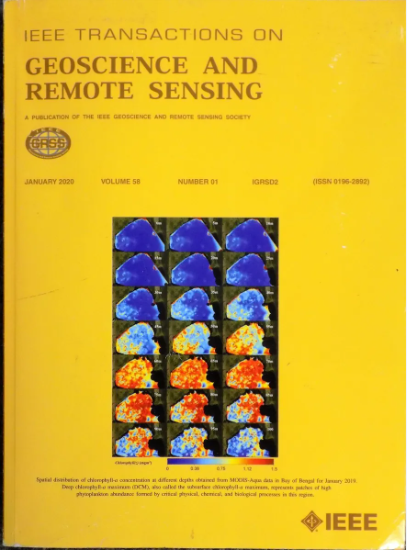SSU-Net: A Model for Mapping Burned Areas Using Landsat-8 and Sentinel-2
IF 7.5
1区 地球科学
Q1 ENGINEERING, ELECTRICAL & ELECTRONIC
IEEE Transactions on Geoscience and Remote Sensing
Pub Date : 2024-09-10
DOI:10.1109/TGRS.2024.3457543
引用次数: 0
Abstract
Information on burned areas (BAs) is particularly important for research on forest fires. Mapping BAs contributes to managing and preventing further destruction. BA mapping has long been constrained by the temporal and spatial resolution of satellite data and classification accuracy, while also neglecting the spectral characteristics of optical satellites. To address this issue, a novel method for mapping and extracting BAs using a semantic segmentation model has been proposed herein. Leveraging medium spatial resolution satellites, Landsat-8 and Sentinel-2, and after determining the optimal spectral band combination, a spectral-spatial module was integrated into the U-Net; this resulted in a new model, known as the SSU-Net. SSU-Net precisely extracted BAs from a single post-fire image. The optimal band combinations for Landsat-8 and Sentinel-2 were bands 7-5-4 and 12-8-4, respectively. SSU-Net achieved anSSU-Net:利用 Landsat-8 和 Sentinel-2 绘制烧毁地区地图的模型
有关烧毁区(BA)的信息对于森林火灾研究尤为重要。绘制燃烧区地图有助于管理和防止进一步的破坏。长期以来,BA 绘图一直受到卫星数据时空分辨率和分类精度的限制,同时也忽略了光学卫星的光谱特性。为解决这一问题,本文提出了一种利用语义分割模型绘制和提取 BA 的新方法。利用中等空间分辨率卫星 Landsat-8 和 Sentinel-2,并在确定最佳光谱波段组合后,将光谱空间模块集成到 U-Net 中;由此产生了一个新模型,即 SSU-Net。SSU-Net 可从单张火灾后图像中精确提取 BA。Landsat-8 和 Sentinel-2 的最佳波段组合分别为波段 7-5-4 和 12-8-4。SSU-Net 在 Landsat-8 数据上的 F1$ 得分为 0.9296,intersection over union (IoU) 为 0.8707。它在 Sentinel-2 数据上的性能略高,F1$ 得分为 0.9314,IoU 为 0.8752。与 U-Net 相比,SSU-Net 在 Landsat-8 和 Sentinel-2 数据上的 $F1$ 分数分别提高了 4.8% 和 3.4%,IoU 分别提高了 7.7% 和 5.9%。在泛化方面,SSU-Net 在 Landsat-8 数据上训练并在 Sentinel-2 数据上测试后,F1$ 得分为 0.9151,反之为 0.9313,与 U-Net 相比分别提高了 2.1%和 5.1%。SSU-Net 在 BA 绘图中也表现出更高的准确性和泛化能力,支持多源遥感数据的整合,并强调了其在全球范围内可持续森林管理中的关键作用。
本文章由计算机程序翻译,如有差异,请以英文原文为准。
求助全文
约1分钟内获得全文
求助全文
来源期刊

IEEE Transactions on Geoscience and Remote Sensing
工程技术-地球化学与地球物理
CiteScore
11.50
自引率
28.00%
发文量
1912
审稿时长
4.0 months
期刊介绍:
IEEE Transactions on Geoscience and Remote Sensing (TGRS) is a monthly publication that focuses on the theory, concepts, and techniques of science and engineering as applied to sensing the land, oceans, atmosphere, and space; and the processing, interpretation, and dissemination of this information.
 求助内容:
求助内容: 应助结果提醒方式:
应助结果提醒方式:


